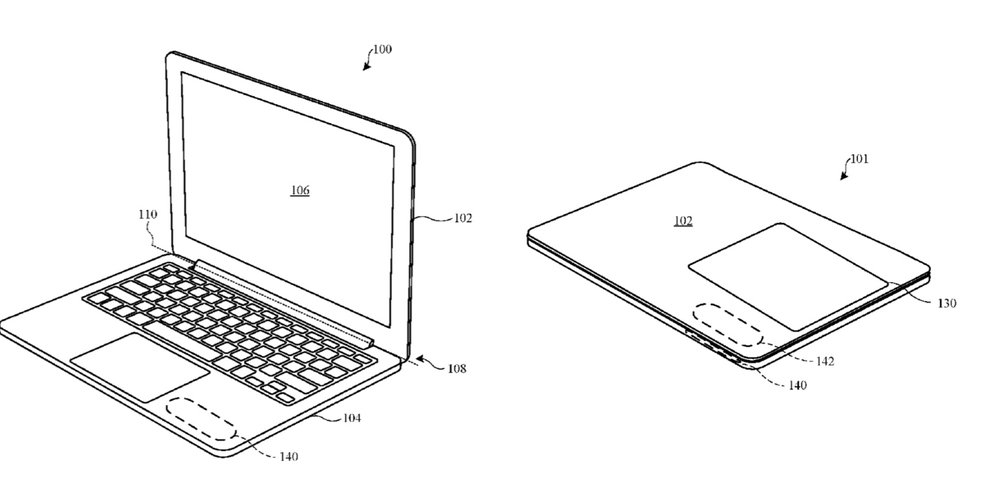Apple has been granted a patent (number 10,185,354) for “capacitive touch opening display for an electronic device” that hints at a future feature for Mac laptops.
Hinge assemblies are commonly used to allow electronic device components to move relative to one another. For example, a laptop can include a base component that’s rotationally coupled to an upper display component by way of a hinge assembly.

In the patent filing, Apple says it’s desirable to provide features to assist a user in moving the upper component of a laptop between closed and open positions. One such feature can be a “finger scoop” located on the base component, the upper display component, or both. A finger scoop can be a recess in the housing of one or both components at a location where the components meet when closed, such that a user can insert a finger into the finger scoop to assist in opening the electronic device when it is closed.
Unfortunately, according to Apple, a finger scoop is not the most advanced or aesthetically pleasing feature. In some cases, a user still may feel as if some amount of prying or inconvenience is required to open a laptop computing device. This may particularly be true where a given device has a clutch assembly in the hinge that is relatively stiff or resistant.
Apple says that, while current hinged component designs for electronic devices have worked well in the past, there’s a need for improved designs in electronic devices having hinged components that provide a better user experience when opening or closing the electronic device. The company apparently thinks capacitive touch is an answer. Touch the sensor and the Mac laptop would unlatch or latch,
Here’s Apple’s summary of the invention: “A capacitive touch opening system can be used with a portable electronic device having rotationally coupled components, such as a laptop computer having a display component that opens from a base component. A first magnet in a first device component (e.g., display) can be located proximate a second magnet in a second device component (e.g., base) when the display is in a closed position relative to the base.
“A sensor on the portable electronic device can detect a sensed event, whereupon the display is rotated automatically to an open position relative to the base using a repulsion force between the magnets. The sensor can be a capacitive touch sensor on the device housing, and may be the entire display housing. One of the magnets can be an electromagnet that may change its magnetic field. An attraction force between the magnets can exist when no sensed event is taking place.”
Of course, Apple files for — and is granted — lots of patents by the U.S. Patent & Trademark Office. Many are for inventions that never see the light of day. However, you never can tell which ones will materialize in a real product.
